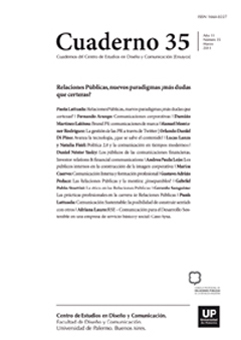Política 2.0 y la comunicación en tiempos modernos
Abstract
This article analyzes how new media - like Internet and social networks have changed the ecosystem of political information, with new channels and information flowing with greater rapidity, with a consumer who is also generating of the news: the new prosumer. The convergence between traditional and new media, demand new mental capabilities on behalf of the users. And new skills on the part of the political candidates, who need to intervene with segmented messages and capacity to administer the conversation. Also, emblematic cases are analyzed, like Barack Obama´s campaign as an icon of political communication 2.0, and different scenarios are described and contextualised, according to data of the Permanent Observatory of Politics 2.0 of the Institute of Politics & Democracy of the Society of the Information for the Americas (eamericas.org).
References
Anderson, C. (2007) La economía Long Tail. Barcelona: Ediciones Urano.
Battelle, J. (2006) Buscar. Barcelona: Ediciones Urano.
Castels, M. (1999) La era de la Información. Vol.1. México: Siglo XXI.
Jenkins, H. (2008). Convergence culture. Barcelona: Paidós Comunicación.
Johnson, S. (2003) Sistemas emergentes. Madrid: Turner.
Fidel, N. (2008). Barómetro de Identidad Política 2.0. 100 políticos Argentinos. Buenos Aires: Eamericas.org
Mediosfera (s/f), disponible en http://mediosfera.wordpress.com/about/
Plouffe, D. (2009) The Audacity to Win. Washington: Viking.
Piscitelli, A. (2009). Nativos Digitales. Buenos Aires: Santillana.
Varios autores(2009). Cuaderno 28. Buenos Aires: Universidad de Palermo.
Winograd, M. y Hais, M. (2008) Millennial Makeover. USA: Rugter Press.
Smith, A. (2009) The Internet´s Role in Campaign 2008. Washington: Pew Internet & American Life Project.
Smith, A. y otros (2009) The Internet and Civic Engagement. Washington: Pew Internet and Civic Engagement.
Los autores/as que publiquen en esta revista ceden los derechos de autor y de publicación a "Cuadernos del Centro de Estudios de Diseño y Comunicación", Aceptando el registro de su trabajo bajo una licencia de atribución de Creative Commons, que permite a terceros utilizar lo publicado siempre que de el crédito pertinente a los autores y a esta revista.


